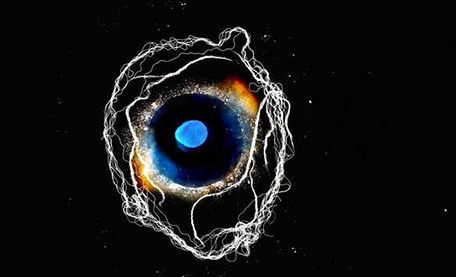Improving Comprehension for Students with Autism | Research & Development
The University of Alabama at Birmingham’s Cognition, Brain and Autism Center collaborated with Lindamood-Bell Learning Processes to study the comparative effects of Visualizing and Verbalizing (V/V) on the brains of children on the Autism Spectrum. This fMRI study, highlighted in two recent peer-reviewed papers, examined activity in the language areas of the brain during comprehension…
Research Roundup | Students with Dyslexia
“We are committed to the ongoing analysis of our program efficacy and have the research to prove it.” -Nanci Bell, co-founder Lindamood-Bell has been involved with research for over 30 years. We actively take part in peer-reviewed studies of our programs and instruction and monitor student results at our learning centers and school…
UW study examines how the brains of students with dyslexia respond to intensive reading intervention (Seeing Stars)
Lindamood-Bell has partnered with many universities to study the neurological and behavioral effects of our sensory-cognitive instruction. Currently, The University of Washington’s Institute for Learning and Brain Sciences (I-LABS) is conducting a study that examines how the brains of students with dyslexia respond to intensive reading intervention (Seeing Stars instruction). We look forward…
MIT Study Shows Low SES Students Get Big Benefit from Seeing Stars Reading Intervention
The Massachusetts Institute of Technology (MIT) McGovern Institute for Brain Research and Department of Brain and Cognitive Sciences, in collaboration with Lindamood-Bell Learning Processes, conducted a randomized controlled trial involving young children with reading disabilities and difficulties. This experiment investigated the efficacy of the Seeing Stars program, which develops symbol imagery for reading. Children were…
New Article in Autism Spectrum News
We’re excited to announce a new article on brain connectivity and autism spectrum disorder has been published in the spring issue of Autism Spectrum News. In the article, Lindamood-Bell’s Director of Research and Development, Paul Worthington, discusses the latest science concerning the improvement of language skills for individuals with autism.
Exceptional Parent Magazine Features Independent Study of Visualizing and Verbalizing and Autism Spectrum Disorder
The current issue of Exceptional Parent Magazine Features an independent study of Visualizing and Verbalizing and autism spectrum disorder (ASD). “The Science of Improved Language Comprehension: Brain Connectivity and Autism Spectrum Disorder,” summarizes the groundbreaking results of a recent University of Alabama Birmingham (UAB) study. In this study, a group of children with ASD…
UAB Study White Paper Now Available
A new white paper released by Lindamood-Bell, “The Science of Improved Language Comprehension: Brain Connectivity and Autism Spectrum Disorder,” summarizes the groundbreaking results of a recent University of Alabama Birmingham (UAB) study. In this study, a group of children with autism spectrum disorder (ASD) received 10 weeks of intensive instruction utilizing the Visualizing and…
Michigan Schools Using Lindamood-Bell Response to Intervention (RtI) Services Make Academic State Champs List
Background Glenwood Elementary School (Kentwood Public Schools) in Grand Rapids, Michigan serves a large percentage of students who are at risk of reading failure. During the 2010-11 through 2012-13 school years, Glenwood implemented Lindamood-Bell instruction in Tier III. Students received Seeing Stars and Visualizing and Verbalizing instruction to develop symbol imagery and concept imagery for…
Colorado School Implementing Lindamood-Bell Outperforms Comparison Schools in Reading
Background Haskin Elementary School in Center, Colorado, serves a large percentage of students who are at-risk of reading failure. From 2010–11 to 2013-14, Haskin implemented Lindamood-Bell instruction to address the specific needs of this student population. The first three years of this project, 2010-11 through 2012-13, were funded through a federal School Improvement Grant (SIG)….
Nanci Bell to present at University of Exeter Medical School, International Conference: The Eye’s Mind: Visual Imagination, Neuroscience and the Humanities
‘The Eye’s Mind’ is a study, based out of the University of Exeter, of the neural basis of visual imagination, and the individual differences in the ability to visualize. A conference exploring the project’s findings will be held May 21-22, 2016. The Eye’s Mind: Visual Imagination, Neuroscience and the Humanities is an international conference…






